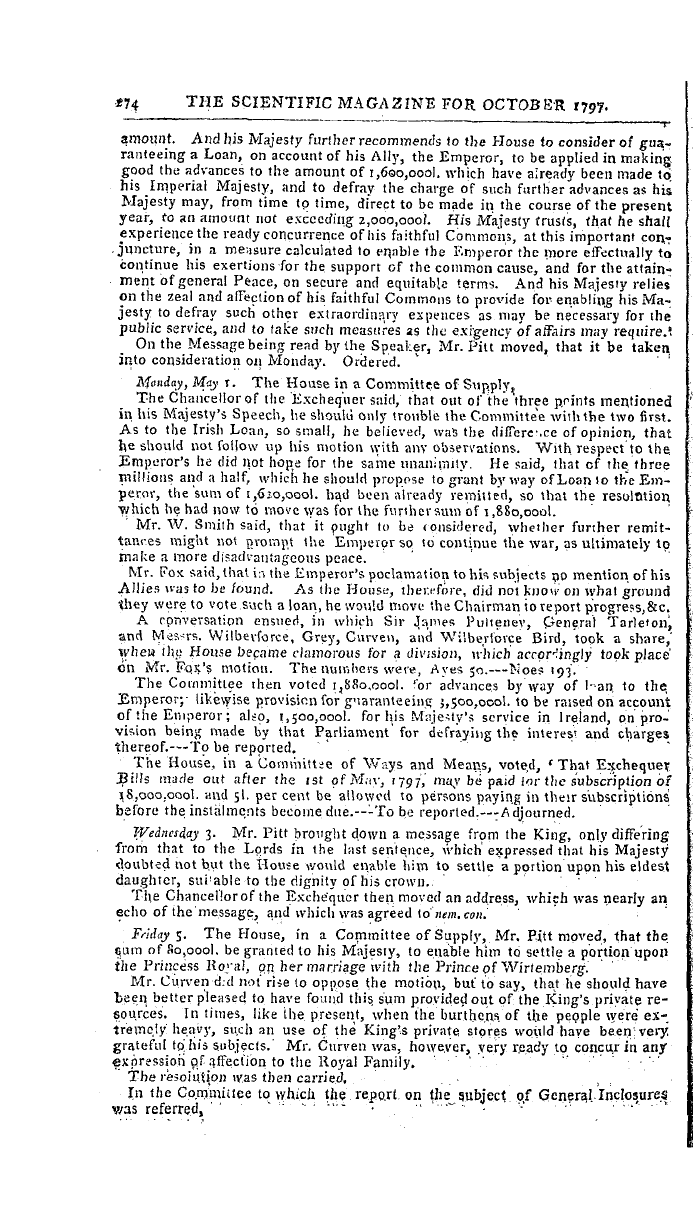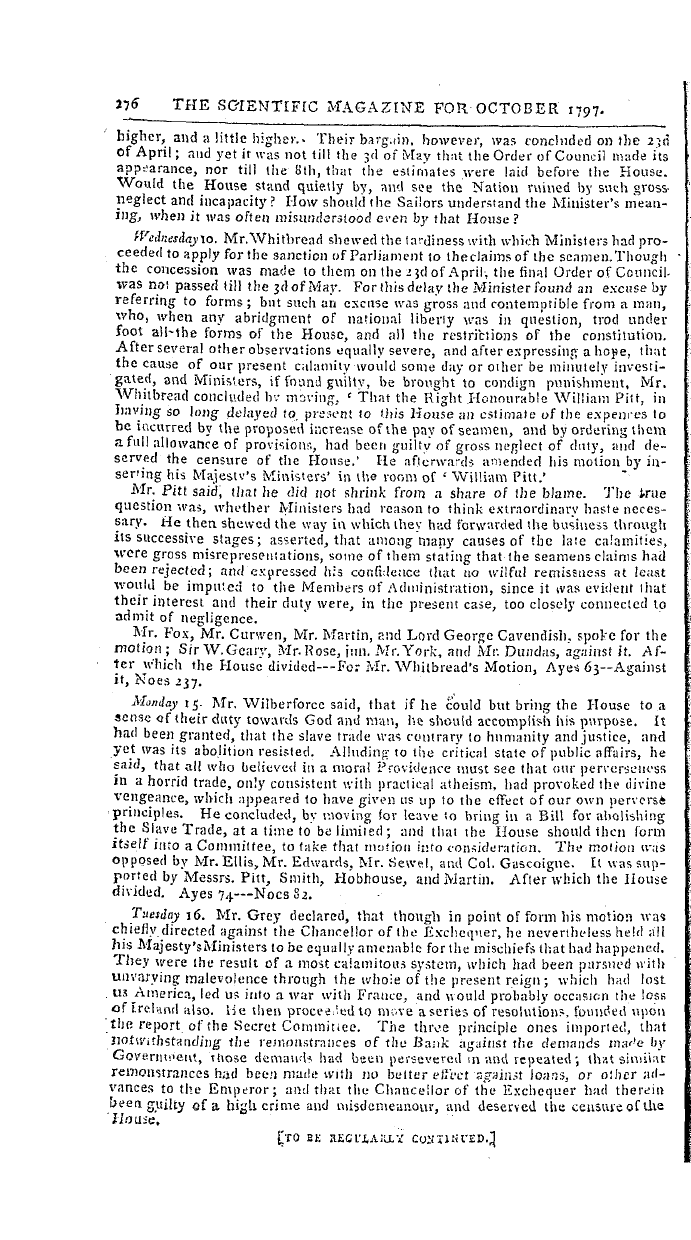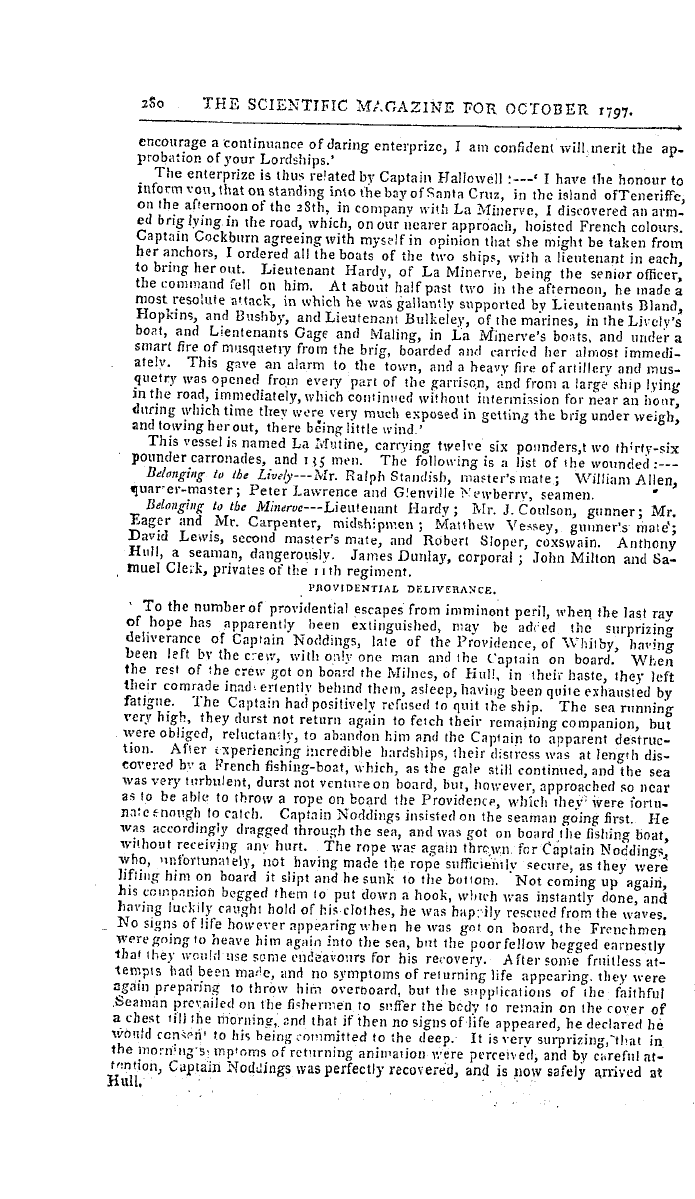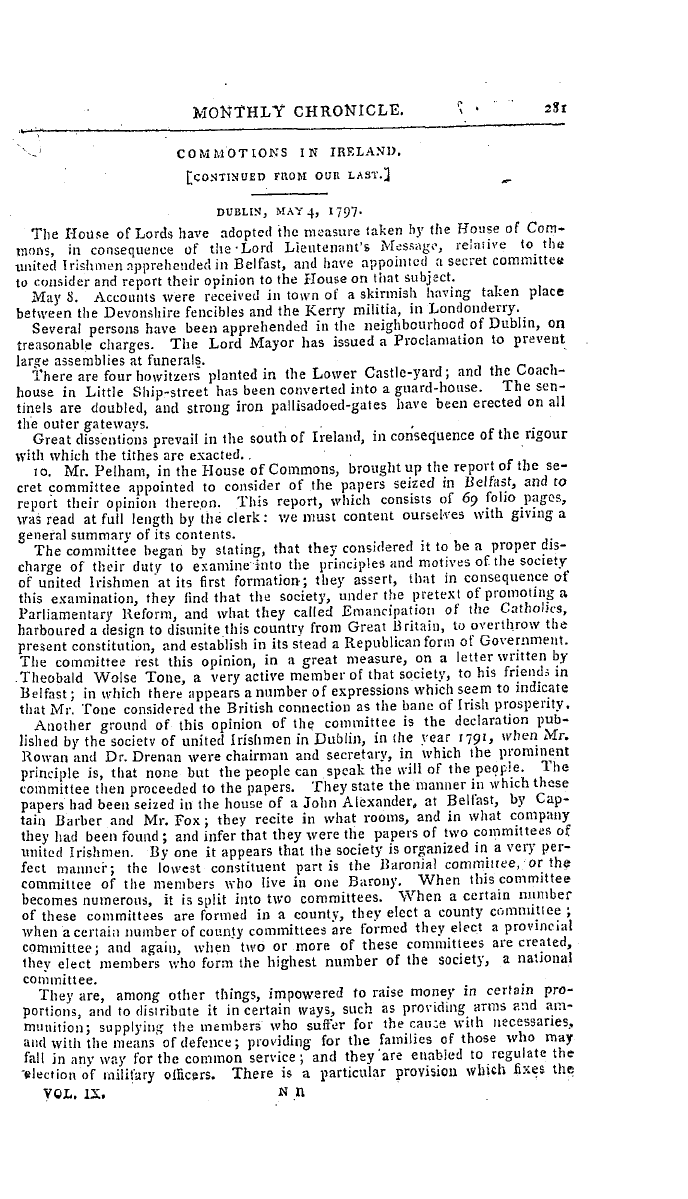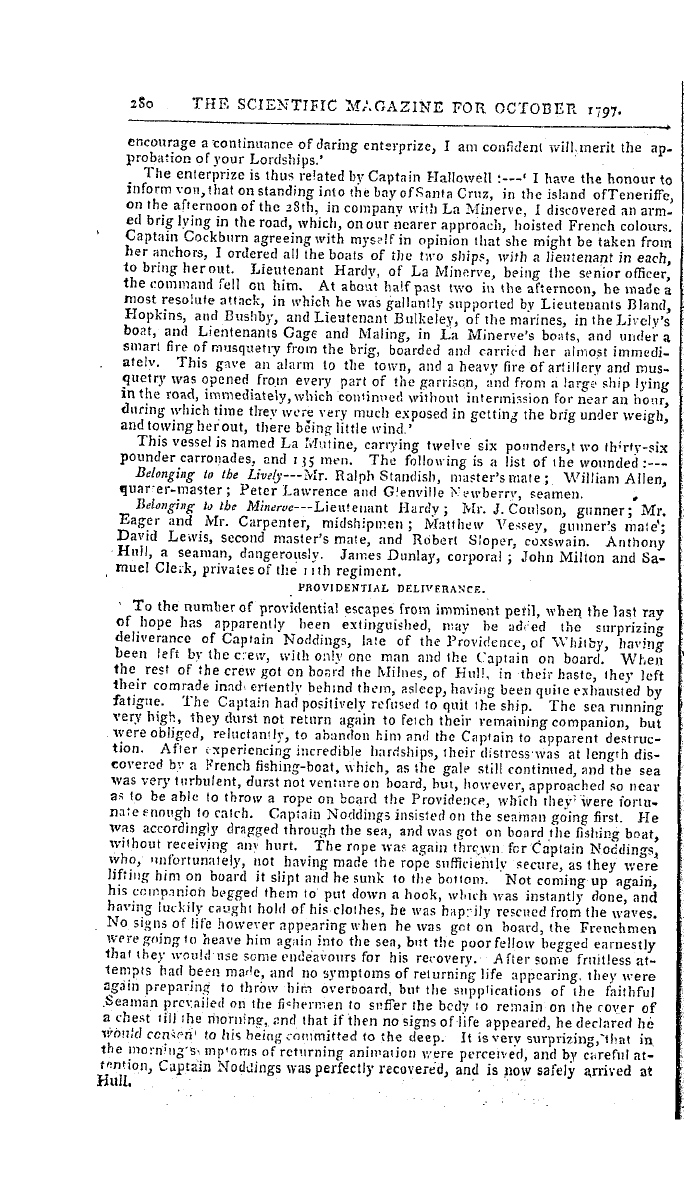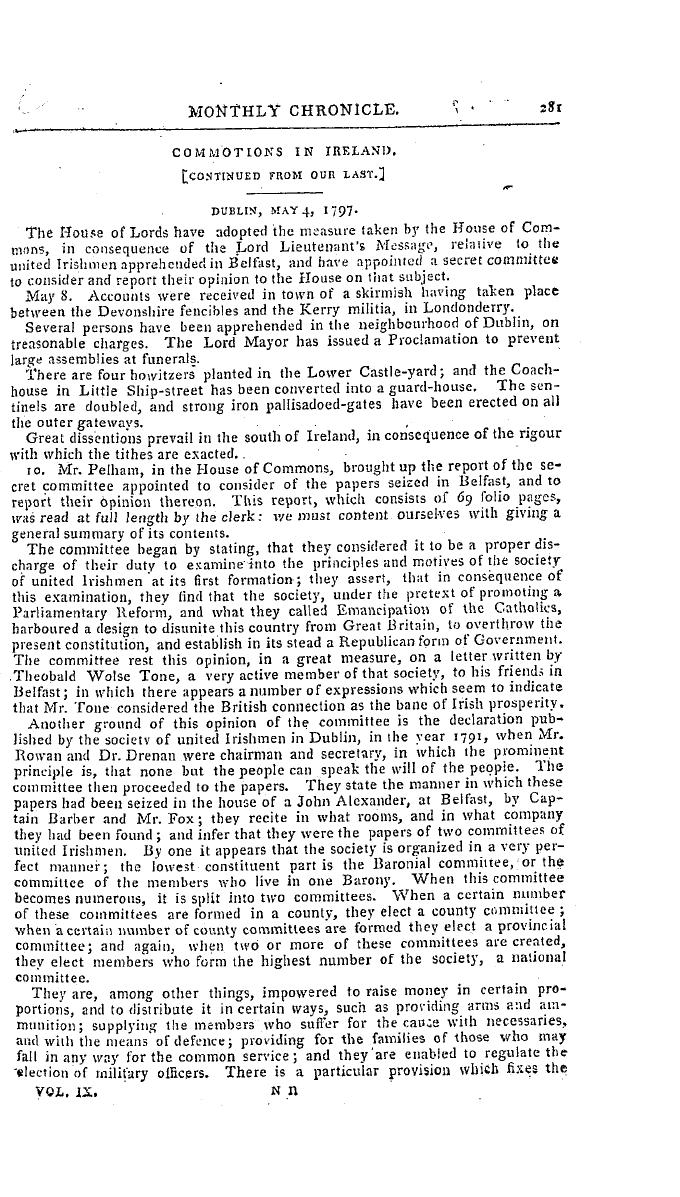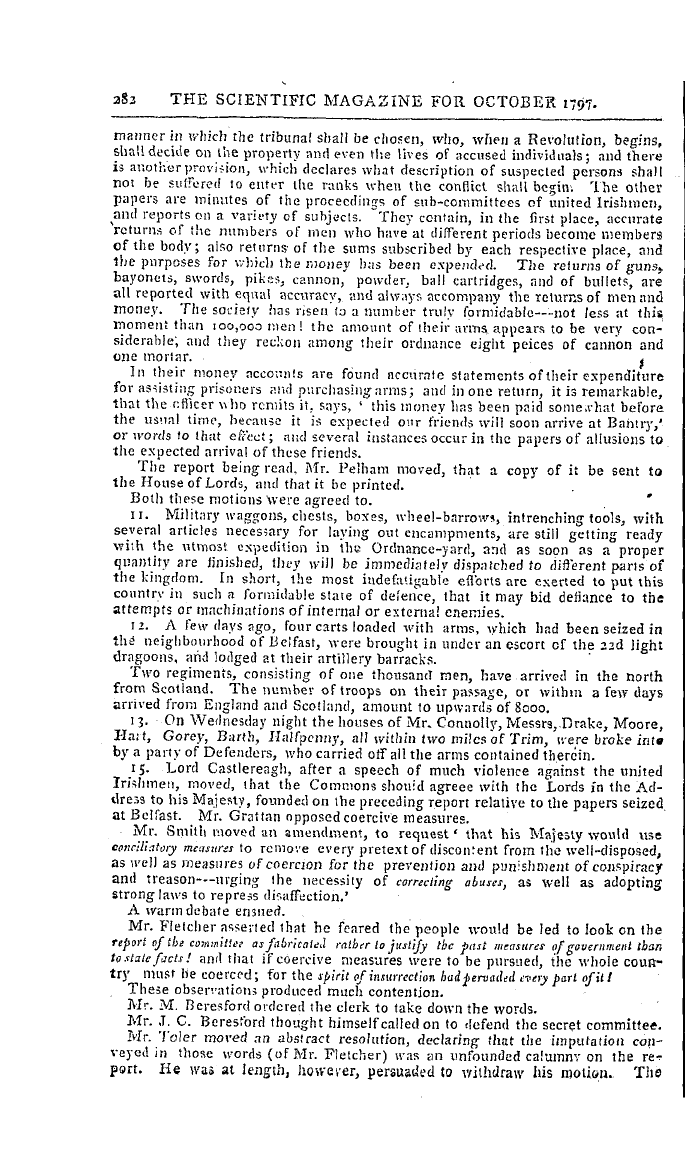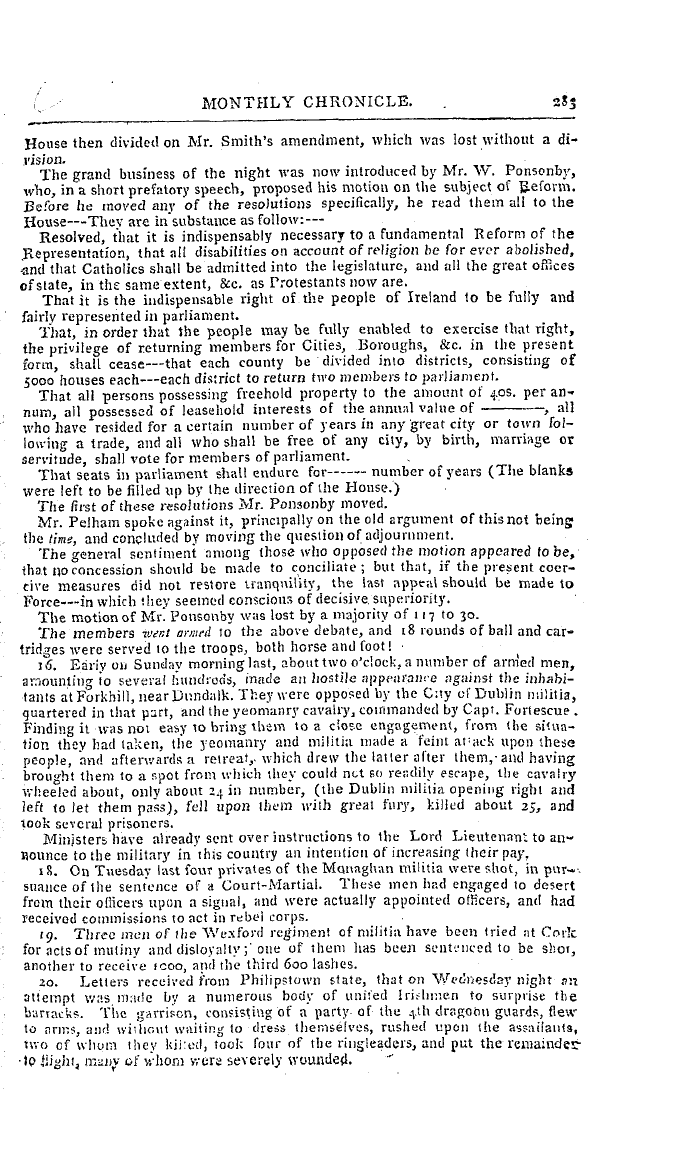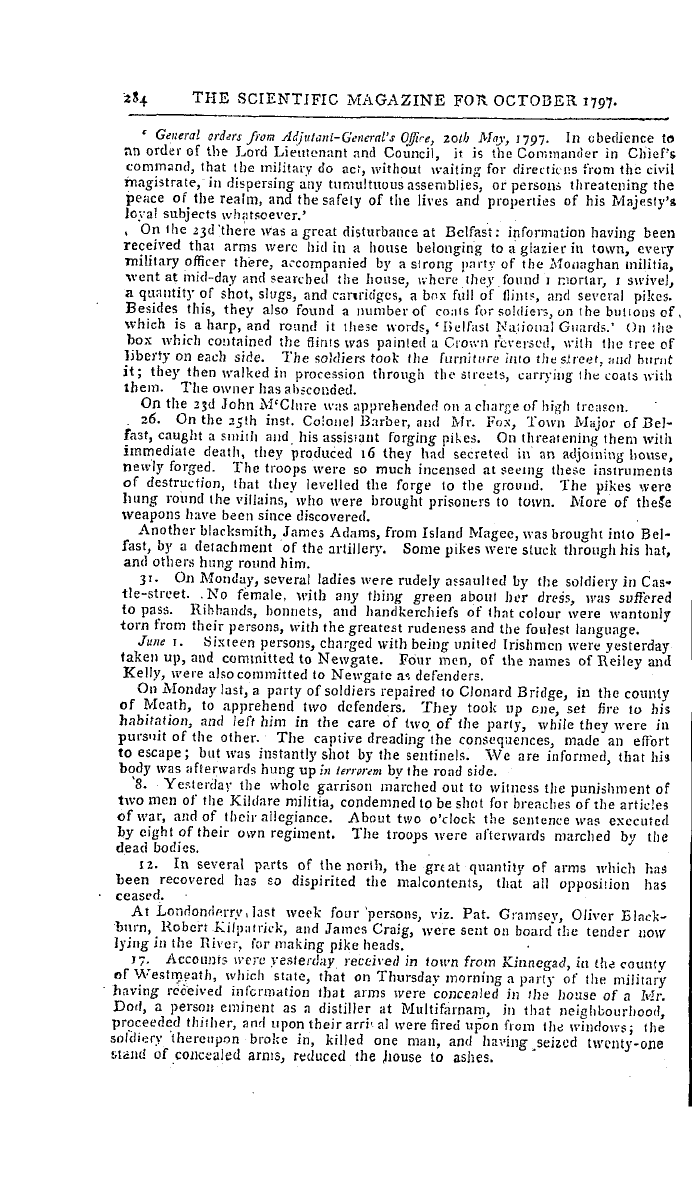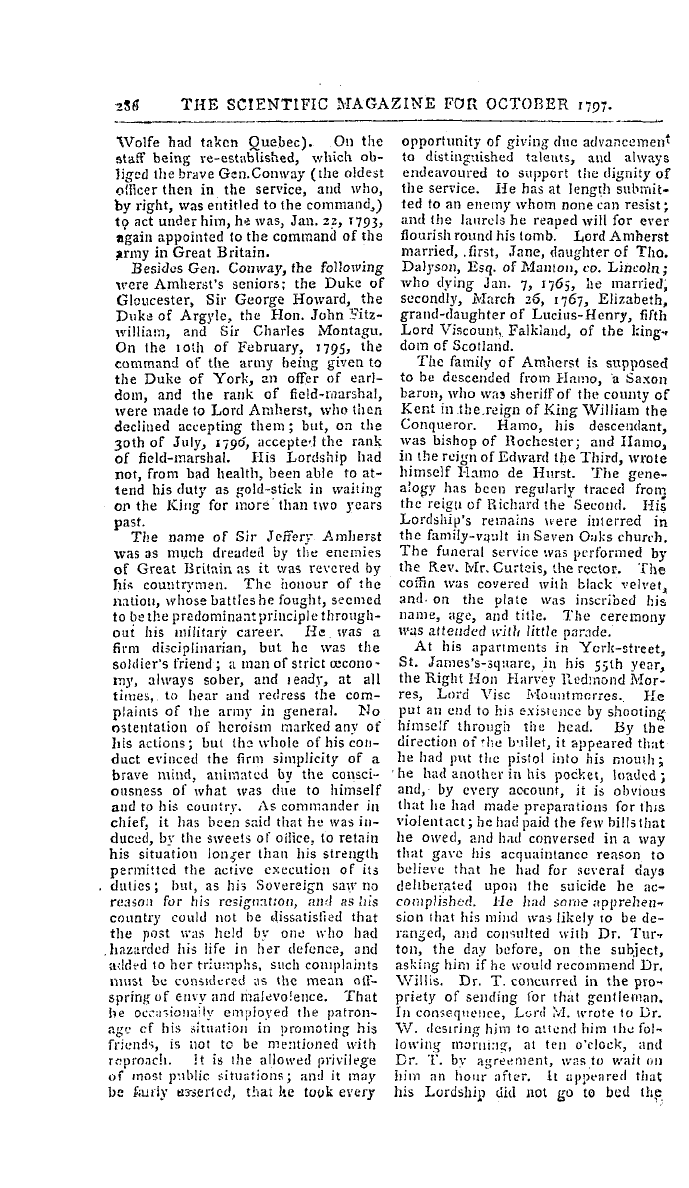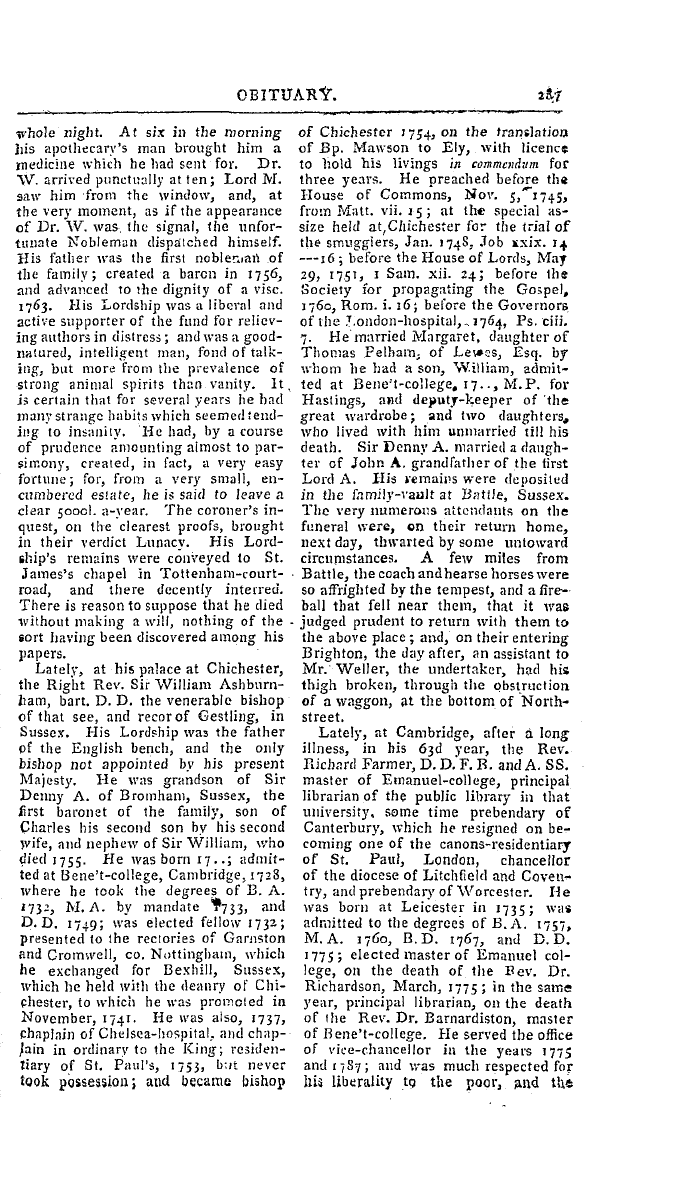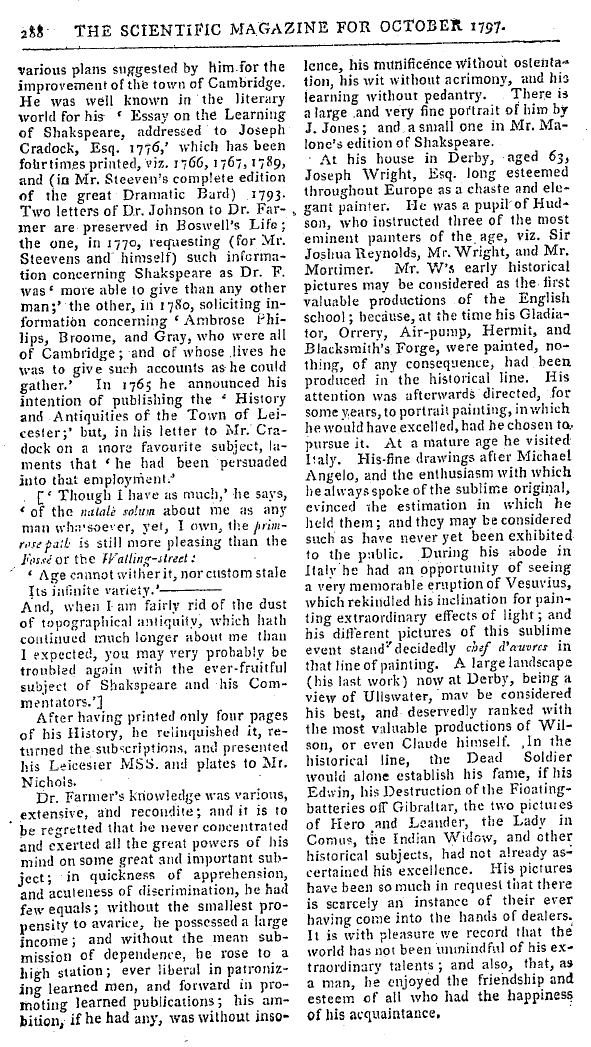-
Articles/Ads
Article THE COLLECTOR. ← Page 2 of 5 →
Note: This text has been automatically extracted via Optical Character Recognition (OCR) software.
The Collector.
the Orkney Islands , by the hand of a hired villain , and at the instigation of a rebel , Sir James Stewart .
ST . FILLAN'S BELL . A SUPERSTITIOUS ANECDOTE . THERE is a bell belonging to the chapel of St . Fillan , in the parish of Killin , and county of Perth , in North Britain , that was in high reputation among the votaries of that Saint in old times . Its seems to be of some mixed metal . It is about a foot highand of an oblong
, form . It usually lay on a grave-stone in the church-yard . When mad people were brought to be dipped in the Saint ' s Pool , it was necessary to perform certain ceremonies , in which'there was a mixture of druidism and popery . After remaining all nig ht in the chapel , bound with ropes , the hell was set upon their head v . ith great solemnity . It was the popular opinion , that , if stolen , it would
extricate itself out of the thief ' s hands , and return home ringing all the way . For some years past this bell has ' been locked up , to prevent its being used to superstitious purposes . It is but justice to the Hig hlanders to say , that the dipping of mad ' people in St . Fijian ' s Pool , and using t ) re other ceremonies , was common to them with the Low landers . The oriin-of the beii is to be
g referred to in the most remote ages of the Celtic churches , whose ministers spoke a dialect of that language . Ant Trode , one of the most ancient Icelandic historians , tells us , in his 2 d chapter , that when the Norwegians first planted a colony in Ireland , about the year 870 ,
' Eo tempore erat Islanclia silvis concreta , in medio montium et Jitforum : turn erant hie viri Christian !; quos Norwegi Papas appellant : et illi peregre profecti sunt , ex eo quod nollent esse hie cum viris Ethnicis , et relinquebant post se nobis et baculos : ex iliopo- - terat discern ! quod essent viri Christian ! . ' Nola and bajula both signify hand-bells . See Du Cange . Giraldus Cambrensis , who visited Ireland about the end of the 12 th centuryspeaks thus of these
, relicts of superstition : 'Hoc non praetereu ' ndum puto , quod carnpanas , bajuias baculosque sanctorum ex superiore parte recurvos , auro et argento aut aere confectos , tarn Hiberniae et Scotiae quam et Givalliae populus et clerus in magna reverentia habere solet ; ita utjuramenta supra haec , longe magis quam super evangelia , et praestare vereantur et perjurare . Ex vi enim quodam occultaet iis quasi
di-, viuittts insita , nee non et viudicta ( aijus praecipue saucti illi appetibiles esse videntur ) plerumque puniuntur coiitemptores . " lie elsewhere speaks of a bell in Ireland , endowed with the same loco motive powers as that of St . Fillan . Topog . Hiber . i . 3 . c . 33 . & 1 . 3 .. c . 33 . For in the j Sth century it is curious to meet with things which astonished Giraldusthe most credulous of mortalsin the 12 th .
, , St . Fillan is said to have died in 6 49 . In the 10 th year of his reign , Robert the Bruce granted the church of Killiu , in Glendochart , to the abby . of Inchaffray , on condition that one of the canons should officiate in the kirk of Strathiillan ,
Note: This text has been automatically extracted via Optical Character Recognition (OCR) software.
The Collector.
the Orkney Islands , by the hand of a hired villain , and at the instigation of a rebel , Sir James Stewart .
ST . FILLAN'S BELL . A SUPERSTITIOUS ANECDOTE . THERE is a bell belonging to the chapel of St . Fillan , in the parish of Killin , and county of Perth , in North Britain , that was in high reputation among the votaries of that Saint in old times . Its seems to be of some mixed metal . It is about a foot highand of an oblong
, form . It usually lay on a grave-stone in the church-yard . When mad people were brought to be dipped in the Saint ' s Pool , it was necessary to perform certain ceremonies , in which'there was a mixture of druidism and popery . After remaining all nig ht in the chapel , bound with ropes , the hell was set upon their head v . ith great solemnity . It was the popular opinion , that , if stolen , it would
extricate itself out of the thief ' s hands , and return home ringing all the way . For some years past this bell has ' been locked up , to prevent its being used to superstitious purposes . It is but justice to the Hig hlanders to say , that the dipping of mad ' people in St . Fijian ' s Pool , and using t ) re other ceremonies , was common to them with the Low landers . The oriin-of the beii is to be
g referred to in the most remote ages of the Celtic churches , whose ministers spoke a dialect of that language . Ant Trode , one of the most ancient Icelandic historians , tells us , in his 2 d chapter , that when the Norwegians first planted a colony in Ireland , about the year 870 ,
' Eo tempore erat Islanclia silvis concreta , in medio montium et Jitforum : turn erant hie viri Christian !; quos Norwegi Papas appellant : et illi peregre profecti sunt , ex eo quod nollent esse hie cum viris Ethnicis , et relinquebant post se nobis et baculos : ex iliopo- - terat discern ! quod essent viri Christian ! . ' Nola and bajula both signify hand-bells . See Du Cange . Giraldus Cambrensis , who visited Ireland about the end of the 12 th centuryspeaks thus of these
, relicts of superstition : 'Hoc non praetereu ' ndum puto , quod carnpanas , bajuias baculosque sanctorum ex superiore parte recurvos , auro et argento aut aere confectos , tarn Hiberniae et Scotiae quam et Givalliae populus et clerus in magna reverentia habere solet ; ita utjuramenta supra haec , longe magis quam super evangelia , et praestare vereantur et perjurare . Ex vi enim quodam occultaet iis quasi
di-, viuittts insita , nee non et viudicta ( aijus praecipue saucti illi appetibiles esse videntur ) plerumque puniuntur coiitemptores . " lie elsewhere speaks of a bell in Ireland , endowed with the same loco motive powers as that of St . Fillan . Topog . Hiber . i . 3 . c . 33 . & 1 . 3 .. c . 33 . For in the j Sth century it is curious to meet with things which astonished Giraldusthe most credulous of mortalsin the 12 th .
, , St . Fillan is said to have died in 6 49 . In the 10 th year of his reign , Robert the Bruce granted the church of Killiu , in Glendochart , to the abby . of Inchaffray , on condition that one of the canons should officiate in the kirk of Strathiillan ,


























































